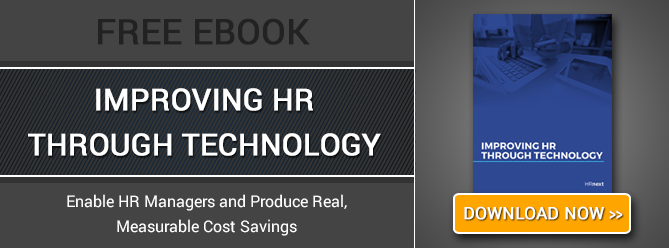The Role of HR in Workplace Bullying Accusations
While HR leaders generally prefer to focus on the details of applicant onboarding, establishing employee best practices and managing human capital to create an efficient enterprise, one of the critical, if less attractive, roles of HR is to respond to accusations of workplace harassment and bullying. This is an area where many HR leaders fall short: CBS News reports that – according to Xpert HR, a human resources firm – only about 2 percent of employees are satisfied with their HR department’s response to claims of bullying.
Some important questions to consider regarding bullying…
Don’t underestimate the value of using the right tools to minimize HR challenges. You’ll save both countless hours over the course of the year while simplifying processes and improving results. To learn more about effective HR tools for small businesses, download a free eBook.
Some important questions to consider regarding bullying…
- Do your managers understand what is and what isn’t bullying?
- Has the definition of bullying evolved in recent years?
- What can managers do and say without crossing the line?
- Do employees feel protected reporting bullying?
- What is the impact of unaddressed bullying on culture and turnover?
“Abuse can be physical, but more often amounts to some form of verbal, written or social harassment.”
What Is Workplace Bullying?
Workplace bullying is a series of repetitive, abusive actions that occur between two employees of a single company. It can take place between employees of equal stature or between management and a subordinate. Often, when it is the latter, the target of the abuse may feel pressure to remain quiet about the abuse for fear that their employment will be negatively impacted or that their job will be made more difficult if they report it. The abuse can be physical, but more often amounts to some form of verbal, written or social harassment. Often, the behavior will not rise to the level of obviously illegal behavior such as sexual harassment or workplace violence, but the results can devastate productivity and morale. According to a 2014 study by the Workplace Bullying Institute, 27 percent of U.S. workers reported direct abusive conduct in the workplace.How Do Employers Typically Respond?
Even if employees report incidences of abuse or mistreatment, statistically they are unlikely to have their concerns taken seriously: The Workplace Bullying Institute found that 72 percent of employers react to claims of bullying in a way that either “condones or explicitly sustains the behavior,” as described by University Alliance. Even in cases where the behavior is addressed, fewer than 20 percent of employers opt to resolve it in a way that makes the unacceptability of the behavior clear to staff. These results can be viewed by employees as even more disappointing in the context of the many claims that are never even addressed. That same study reported 25 percent of employers denied and/or failed to investigate claims, with 11 percent being defended by the business because of the involvement of executive-level officials and mid-level managers as the accused.What is the Role of HR in a Bullying Claim?
HR’s primary purpose is to protect the enterprise and ensure a solid, compliant work environment. Implicit in this is the creation of an environment where employee claims are weighed soberly and without prejudice. While it may seem advantageous legally to deny any wrongdoing out of hand, in the end this may actively undermine protections afforded by written policy. “Protecting a bully [is] NOT a strategy for protecting the institution,” Allison Vaillancourt, vice president for Human Resources & Institutional Effectiveness at the University of Arizona, said to HigherEdJobs.com. “Savvy HR professionals should be smart enough to know that bullies create potential liability and should be focused on confirming bad behavior and getting it to stop.” HRVoice.org encourages HR leaders take the following steps:- Enforce a zero tolerance policy for bullying.
- Conduct mandatory regular harassment training.
- Work on accountability for perpetrators.
- Develop investigative procedures.
Don’t underestimate the value of using the right tools to minimize HR challenges. You’ll save both countless hours over the course of the year while simplifying processes and improving results. To learn more about effective HR tools for small businesses, download a free eBook.





Leave a Reply
Want to join the discussion?Feel free to contribute!